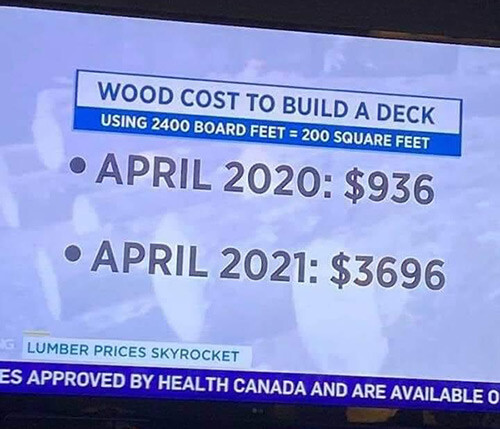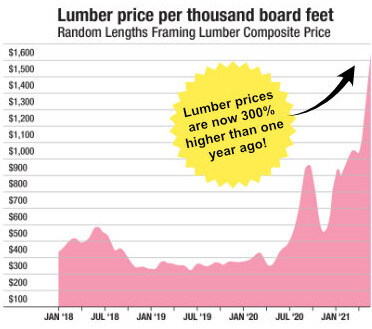Easy-to-assemble Amish-Built kits
delivered directly to you... nationwide.
delivered directly to you... nationwide.

You may have seen in the news that lumber prices have risen over 300% over the last twelve months. We have not increased our prices in three years nor throughout this unprecedented rise in lumber costs. (See graph below.)
Vinyl, hardware, and all supply costs have also increased. These persistent increases in the price of raw materials are now too great for us to absorb, and we regrettably have no choice but to increase our prices by 7% starting June 1st, 2021. Please do not miss this opportunity to lock in our current prices.






 Check Out What Others Say About Us
Check Out What Others Say About Us
